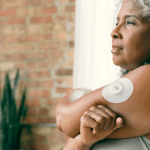Strokes are a leading cause of long-term disability and can significantly impact the lives of both survivors and their caregivers. Understanding the different types of strokes, their symptoms, and recovery options is crucial for effective management and rehabilitation. This blog post will explore the various types of strokes, current research findings on recovery, and strategies to enhance rehabilitation outcomes.
Types of Stroke
Strokes can be classified into several categories, primarily based on their causes and effects on the brain. The main types include:
1. Ischemic Stroke
Overview: Ischemic strokes account for approximately 87% of all strokes. They occur when a blood vessel supplying blood to the brain becomes blocked, typically by a blood clot.
Subtypes:
- Thrombotic Stroke: A clot forms in an artery supplying blood to the brain.
- Embolic Stroke: A clot forms elsewhere in the body and travels to the brain.
Symptoms: Sudden numbness or weakness, confusion, trouble speaking, vision problems, and severe headache.
2. Hemorrhagic Stroke
Overview: Hemorrhagic strokes make up about 13% of strokes and occur when a weakened blood vessel ruptures, causing bleeding in or around the brain.Causes: High blood pressure, aneurysms, or arteriovenous malformations (AVMs).Symptoms: Similar to ischemic strokes but may also include sudden severe headaches and nausea.
3. Transient Ischemic Attack (TIA)
Overview: Often referred to as a “mini-stroke,” a TIA is caused by a temporary blockage of blood flow to the brain. Symptoms are similar to those of a stroke but typically last only a few minutes to hours without causing permanent damage.
Importance: TIAs are critical warning signs; over one-third of individuals who experience a TIA will have a full-blown stroke within a year if not treated.
4. Brain Stem Stroke
Overview: Strokes occurring in the brain stem can affect vital functions such as breathing and heart rate. They may lead to severe disabilities, including locked-in syndrome, where the patient is aware but cannot move or speak.
5. Cryptogenic Stroke
Overview: This type refers to strokes where no clear cause can be determined despite thorough investigation. It can be particularly challenging for treatment and prevention.
Recovery from Stroke
Recovery from stroke varies widely among individuals and depends on several factors, including the type of stroke, severity, location in the brain affected, age, overall health, and the timeliness of treatment. Recent research has provided valuable insights into effective recovery strategies:
Current Concepts in Recovery
- Neuroplasticity: The brain’s ability to reorganize itself by forming new neural connections is crucial for recovery. Rehabilitation efforts often focus on harnessing this neuroplasticity through targeted therapies.
- Proportional Recovery Rule: Research indicates that patients with mild deficits tend to recover more fully than those with severe deficits. On average, patients can regain about 70% of lost function within three to six months post-stroke 2. However, this is not uniform; some patients may experience significant improvements beyond this timeframe.
- Role of Neuroimaging and Stimulation: Advanced techniques such as neuroimaging combined with non-invasive brain stimulation have shown promise in enhancing recovery outcomes by promoting neural connectivity 2. For example:
- Repetitive transcranial magnetic stimulation (rTMS) applied early after a stroke has been linked to improved motor performance in certain patients 2.
- Tailored Rehabilitation Programs: Personalized rehabilitation plans that address specific functional limitations are essential for effective recovery 4. These may include physical therapy interventions focusing on strength training, gait training, and improving sensory functions.
Strategies for Effective Recovery
- Early Intervention: Prompt medical attention following a stroke is crucial for minimizing damage and maximizing recovery potential.
- Comprehensive Rehabilitation Programs: Engaging in structured rehabilitation programs that include physical therapy, occupational therapy, and speech therapy can significantly enhance recovery outcomes.
- Support Systems: Emotional support from family members and caregivers plays a vital role in motivating stroke survivors throughout their recovery journey.
- Lifestyle Modifications: Adopting healthier lifestyle choices—such as regular exercise, balanced nutrition, and managing risk factors like hypertension—can prevent future strokes and improve overall well-being 7.
Conclusion
Understanding the different types of strokes and their potential impacts on recovery is essential for both seniors and caregivers navigating this challenging health issue. With advancements in research and rehabilitation techniques, there is hope for improved outcomes for stroke survivors. By focusing on personalized care strategies that promote neuroplasticity and support emotional well-being, we can enhance recovery experiences for those affected by strokes.
References
- Johns Hopkins Medicine. (2023). Types of Stroke.
- Neurology Research & Practice. (2020). Recovery from stroke: current concepts and future perspectives.
- Healthline. (2023). Types of Strokes: Causes, Symptoms, and Treatments.
- PMC NCBI. (2023). A Comprehensive Review of Physical Therapy Interventions for Stroke Recovery.
- Exceptional Emergency Center. (2021). Types of Strokes.
- American Stroke Association. (2023). Types of Stroke and Treatment.
- Lone Star Neurology. (2022). 5 Types Of Stroke: Symptoms, Causes And How To Treat.



